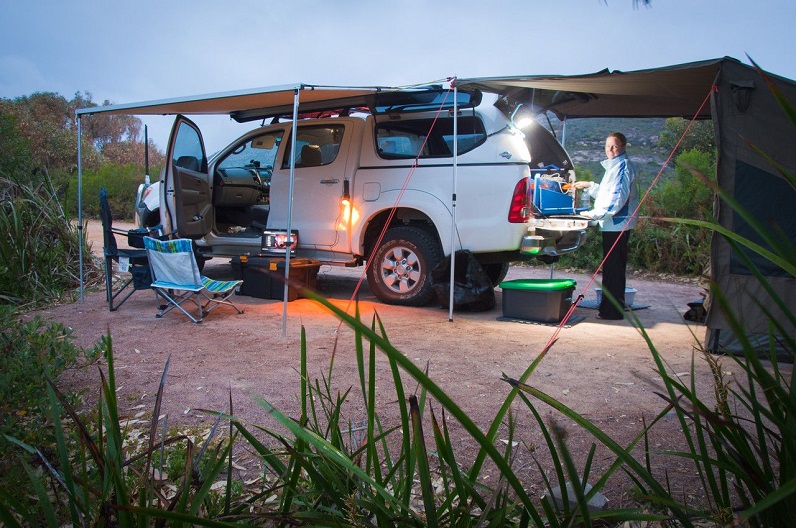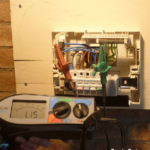
Fitting out a 4×4 with aftermarket accessories is a never ending process. Off-road enthusiasts are aware of this, but that still doesn’t stop them from crossing items off their bucket list on a regular basis. After all, no one ever said that getting the perfectly equipped 4WD would be easy. Once you know that the vital parts like the engine and breaks are in top notch condition, you go for protective equipment like bull bars, flairs and bonnet protectors. Then, you can start wondering whether it’s time to do a suspension upgrade or to increase storage options in and around your vehicle with a roof rack for extra comfort. Here are a few modifications you can perform to your 4×4 that you might not have thought of, yet can play a crucial role in how comfortable and enjoyable your trip is.
A Power Supply
If you plan on bringing along some digital gadgets, you’ll need a power supply for them. If you have 12V appliances, you are familiar with the struggles of keeping them running when your are deep into the outback. We all need some extra juice to power our adventure. Fortunately, you can easily get a multi stage charger compatible with all types of deep cycle batteries, including lead acid, AGM and gel batteries. Deep cycle batteries are the ultimate 4×4 battery that allows you to safely and efficiently power your 12V appliances. There are powerful, deep cycle batteries with a 20 Amp DC to DC charger that can be connected to a solar system. These models are used in RV’s, campers and can even give you juice while you are driving.
This is one of those off-road investments you don’t save your money on. Look for a battery that is made to last. You can note this by the heavy duty case (aluminium or alloys) and the type of wiring and circuity that is used in its construction. For example, if you find one with microchip monitoring, short circuit and overcharge protection, reverse polarity protection and a host of overload protection features, you have a decent piece of gear on your hands. These days, they even employ digital automation for charging and maintaining the power bank.
A 4×4 battery designed to work with solar usually allows input of 13.0 to 27.0 Volts while the DC input is 12.8 to 16V Volts. These batteries are in tune with the work of the alternator or the vehicle battery, while the output current is 20A (both DC and solar). Regardless, look for a battery with a warranty of at least a year or two, as that can speak volumes about its quality and the manufacturer’s trust in their product.

Off-Road Shade
Now, having all that extra power doesn’t mean you’ve covered all bases. You will probably want to cool off after a long day of driving, which is best done outside the vehicle. I know I don’t want to stay in the seat all day. Off-roaders experience this on a regular basis, especially when they need some rest.
But how to deploy the stretcher for a shut eye when you can’t hide from the sun? Many turn to shade awnings to set up temporary shelter from direct exposure to the sun. Their design of awnings has significantly advanced over the years. If the last model of car awning you recall is the two pole side shade, check out the new stuff. Not that there is anything wrong with the simple side awning, but do explore the new types.
The batwing or 270 degree, 11 sqm 4×4 shade awning has become the go to product for many Aussies. These awnings sort of changed the 4×4 camping scene because you get much more usable space. Of course, you can adjust them or choose a slightly modified edition that fits your specific needs. Fox wing awnings are one of these modified editions I’m speaking of, and they cover slightly less area than the batwing. Some blokes (or their partners) want protection from creepy crawlies so you can reinforce the awning with a mesh netting. If that’s your shtick, you can enclose the space and have an annex to your tent. It’s all personal preference.
Look for a 4×4 shade awning made from high quality rip stop canvas if you want to get the best value for your money. The models with 280gsm cross-thread polyester cotton blend are very popular and when coupled with a good aluminium frame you can get quite a use out of them.

Heat Shields
Sooner or later you have to get back to the passenger cabin though. And if you don’t want to feel like you’re inside a boiler room, you would have to do something about the relentless sun. Unfortunately, the heat sources you have to protect your off-road vehicle from are plentiful. The heat coming from the roof is cumulative and can make you light headed. Your motor is running smoothly and that’s great, but the thermal wave coming from the engine box can make you feel like you’re sitting inside a sauna. Not to mention the undercarriage and all the tubing that goes through there.
Naturally, 4×4 drivers want to avoid putting up with all this heat. That’s why high temp heat shield has become standard insulation for all those vehicles. Peel and stick sheets are very popular because they are relatively cheap and can be cut to measure, so you can cover all those edges by using a small roller. The high temp heat shield is made to standards typical for original equipment manufacturer products. These sheets have a polyester core created with needle punched fibreglass and the top is made of aluminium. It’s one of the most optimal solutions for thermal (and partially acoustic) insulation for your 4×4.There is more than one way to approach the installation. You can try to cover as much surface in your cabin as possible, which includes applying heat shield to the floor, the roof and gutting the doors for maximum effect. Then, there are those off-roaders that are satisfied as long as the main heat sources are neutralized, so they put these heat shield sheets over the exhaust tubing, the engine box and other specific sore points in the cabin. Your driving experience and in cabin comfort will be increased regardless of the exact type of heat shield you go for.



